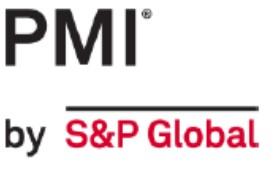The Global Purchasing Managers’ Index (PMI) for manufacturing produced by J P Morgan using the data from S&P Global slipped further into negative territory in June to 48.8 following three months at 49.6. This came about because output declined (having been positive for 4 months) following another decrease in new orders – the 12th month in a row that this has been negative. The sector breakdown showed output falling for intermediate and investment goods and stable for consumer goods.
The manufacturing PMI in the UK has been below 50 since last August and there was a further deterioration in the latest reading which fell to 46.5 although this was still above the low point we saw last December. Output (for investment and intermediate goods manufacturers), new orders and employment all fell in the month, although price pressures eased; the index was helped down by a further improvement in suppliers’ delivery times.
The Euro-zone PMI also fell compared to May and was at its lowest level for 37 months (May 2020) with output falling at its fastest rate since last October when it was affected by concerns over energy (mainly gas) supply shortages. Factory gate prices fell rapidly but, more importantly, employment in the manufacturing sector fell for the first time since January 2021 and confidence was at a 7-month low.
At the country level, only Greece has a manufacturing PMI above the crucial 50 level and it was one of only two countries to see an improved PMI reading in June – the other was France, although they remain firmly in negative territory. The other countries, who all saw their PMI lower in June, were mostly at 3-year lows – the exception here was Spain which was “only” at a 6-month low.
Elsewhere in the EU, Czechia and Poland slipped further into negative territory and, despite an improvement on the May reading, Sweden was not quite back to the weak April figure; there was a very dramatic collapse in the PMI for Hungary – this is often volatile and had been bucking the global trend for most of the past year – with orders and purchases of stocks down sharply, although output was still growing. Outside the EU, the Turkish manufacturing PMI remained stuck at 51.5 (the same as both April and May), while Switzerland, like Sweden, had an improved reading that still left it a long way from the crucial 50 reading.
In Asia, while most countries saw a lower manufacturing PMI reading than in May – Taiwan was the exception, although the reading remains the weakest in the region at 44.8 – there is a mix of levels. A reading of 47.8 for South Korea showed an acceleration in the pace of decline of activity and the fall for Japan moved them a small positive to just below the crucial 50 level; China (50.5) is still just positive and the ASEAN region (51.0) only saw the smallest of reductions, while India (57.8) has by far the most positive manufacturing PMI globally despite the slightly lower reading.
In the Americas, 4 of the 5 countries saw their manufacturing PMI figure slip further below the crucial 50 level with the US now with the lowest reading in this group at 46.3 – this is their lowest manufacturing PMI since last December. The exception was Mexico which bucked both trends with a small improvement in the already positive figure to read 50.9.
Across the 28 countries/regions that we cover in this analysis (excluding the global total), only 7 have manufacturing PMI readings above 50 (there were 9 in May). We have already mentioned that India had the highest reading (57.8), while Austria has the lowest (39.0). Compared to May, the largest reductions were in Hungary (down by 12.9 points) and Germany (down by 2.6 points), while the best improvement was in Sweden (up by 4.1 points). The individual S&P Global PMI reports are available to download on their web-site at https://www.pmi.spglobal.com/Public/Release/PressReleases but we also have a summary charts report which is available to download below. You should note that the PMI readings for Hungary, Sweden and Switzerland are not compiled by S&P Global but can be found with an appropriate internet search (it also means that they are not part of the global PMI calculation).

